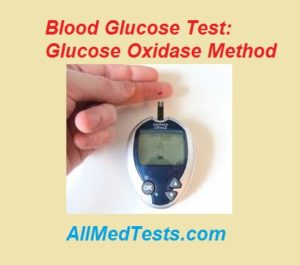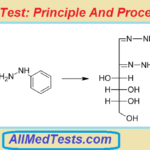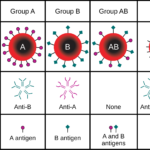Before we move to discover why estimation of blood glucose is necessary and how is it estimated? We will first, try to know that what is glucose? Glucose is one of the most important supplements in our blood which is responsible for the transfer of energy to all cells of the body. This means that if we have more amount of glucose in our body, we will healthier accordingly. Now it is very necessary for to estimate the amount of glucose in our blood and the reason for that is already mentioned. But how to do that? Well, there are a lot of tests for the estimation of glucose but today we will go for the estimation of blood glucose by Glucose Oxidase Method. We will discuss almost everything important thing about the test in this article so get tuned and let’s start with our test.

The principle for Estimation of Blood Glucose by Glucose Oxidase Method:
The principle of this test might not be easy to understand but you can learn well if you concentrate on every line I am about to write. I will try to go as simpler as I can with my words. So, basically Glucose Oxidase with the help of which we estimate Blood Sugar is an enzyme and it works as a catalyst for D-Glucose. It oxidizes the D-Glucose which results in the formation of hydrogen peroxide and lactone substance like D-Glucose is again slowly hydrolyzed. We will again use a peroxide enzyme (which could be any) to break this hydrogen peroxide into water and oxygen. An oxygen acceptor will then reach with oxygen in the next step which will result in the formation of a colored compound. The amount of this substance can be measured with a colorimeter.
The collection of sample and Reagents for Estimation of Blood Glucose by Glucose Oxidase Method.:
The first step before performing this step will be the collection of blood sample. The specialist can extract blood from patient’s body by using a conventional but sterilized syringe. Make sure that you take proper precautions while taking the blood sample otherwise, this could cause something real harm in the future. Let us now talk about the reagents for this test.
- A 100 ml of Sodium Hydroxide is taken with distilled water.
- Zinc Sulfate solution (55 ml in amount) will then be diluted with sodium sulfate solution.
- Take a Phosphate Buffer 0.5M in quantity whose PH should be 7.2.
- Now the buffer you have, in it, dissolve 25 ml of 25 mg of glucose oxidase.
- Now in this buffer, add 2 ml of peroxidase to take the buffer up to a quantity of 250 ml.
- Note that this solution is will be active and can be used even after 4 weeks if kept at 4 degrees in a colored bottle which must be brown.
Once you have this reagent prepared, you can move on with the procedure for the estimation of Blood Glucose by Glucose Oxidase Method.
Blood Glucose Test Procedure:
- In the first step, take 0.1 ml of blood and pour it in a solution of sodium sulfate zinc sulfate reagent. Take all of this solution in a centrifuge tube.
- After adding sodium hydroxide (0.1 ml in amount) in the centrifuge tube in the present solution, centrifuge all of this solution at the rate of 3000 rpm for about 5 minutes. The supernatant of 0.5 ml must be taken in duplicate after that.
- Add 5ml of the glucose oxidase reagent incubate for 1h at 37°C and read the extinction at 540nm against the reagent blank.
- If the absorbance reading of the sample is too high, dilute the supernatant which was obtained earlier, 2x with distilled water and repeat the subsequent step.
You have successfully performed your test in just 4 easy steps. Now you have successfully estimated the amount of glucose in the blood. Always keep in mind that the Blood Glucose estimation might not be correct if you didn’t take all the chemical needed or missed any step in the procedure. If you have then your test will definitely be a successful one.
Final Words:
So, this was all from the estimation of blood glucose by glucose oxidase method. If you have any query about the test then you can ask in the comment section below. Also, you can leave us your feedback about this test in the section given below. If you want to learn about more biological tests then visit the homepage of All Med Tests for them.






Hi there,
can you explain why the Zinc sulphate, sodium sulphate and sodium hydroxide is added?
thanks,
jessica
will try to add description in the post.